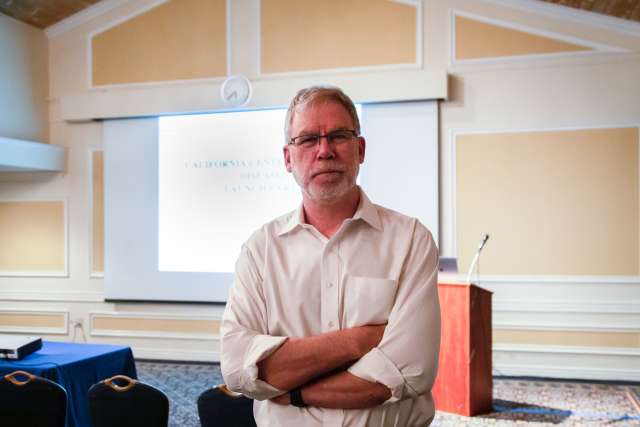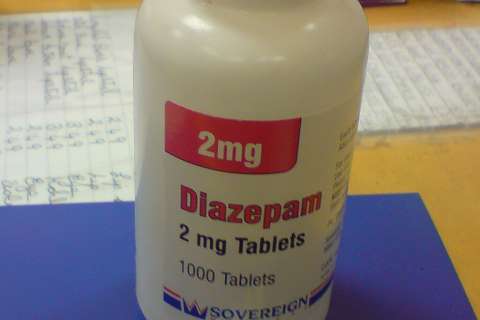When Stanley Nelson, MD, M. Carrie Miceli, PhD and Melissa Spencer, PhD established the Center for Duchenne Muscular Dystrophy at UCLA in 2006, no treatments existed for the rare genetic disorder that affects about 1 in 5,000 boys — including Nelson’s now 21-year-old son, Dylan Miceli-Nelson.
At the time, Dr. Nelson redirected his own laboratory to focus on translational genomics to improve diagnosis and support work on Duchenne muscular dystrophy and other genetic diseases. Now, thanks in part to that work and the efforts of industry partners in translational genomics, there are four approved treatments for DMD. Still, these treatments can help only about 25% of children with the condition. There’s no specific therapy yet approved for the other 75%, Dr. Nelson says.
Translational genomics focuses on translating the findings of genetic research into practical applications, including diagnostics and therapies, for genetic diseases.
“There is a steadily evolving process of translational genomics of how we’ll treat a genetic disease,” Dr. Nelson says. “And the field is working out the steps and the crank that we can turn potentially over and over again for all sorts of other muscle diseases, or nerve diseases, or liver diseases, or heart disease, or lung disease.
“Collectively, we are in the process of reinventing what medicine looks like by working to solve rare genetic diseases,” he says. “So we’re in a very steep learning curve right now.”
Dr. Nelson recently was named the inaugural Dr. Allen and Charlotte Ginsburg Endowed Chair in Translational Genomics, part of a $29 million gift to establish the Ginsburg Center for Precision Genomic Medicine, to support his work in this area.
The gift “is an important indicator of the opportunities and importance of tackling rare diseases and I am so pleased that it will make this work a tangible part of what we’ll be doing on the UCLA campus indefinitely,” Dr. Nelson says.
Allen Ginsburg, MD, a retired ophthalmologist who completed his residency at UCLA in 1963, has been interested in genomic research since the human genome was first sequenced in 2003.
“It has great promise,” Dr. Ginsburg says. “It also has some things that need to be worked on.”
The promise of translational genomics
Over the past decade, more than 1,000 different disease genes have been identified through the worldwide genetic network, Dr. Nelson says. His lab at UCLA has helped identify 60 new disease genes over that period.
“By identifying how specific genetic mutations cause a specific disease, we not only learn about human development and biology in unprecedented ways, but we also immediately impact patient diagnostics and can return findings back to people that would otherwise be unsolved for their lifetime,” Dr. Nelson says, adding that genetic findings can inform treatment insights for many diseases.
Translational genomics led to ideas that enabled development of approved treatments for Duchenne muscular dystrophy and spinal muscular atrophy, another genetic disorder that affects children.
Dr. Nelson is also a leader of the Undiagnosed Diseases Network at UCLA, which uses comprehensive evaluations, including genome or exome (the protein-coding parts of the genome) sequencing, to identify extremely rare genetic diseases — the kind that may only affect one or two people in the world.
While identifying an ultra-rare genetic mutation may answer one question, how to approach treating these diseases remains challenging, Dr. Nelson says.
“If you have a disease that only affects two or three people, even though it’s severe, how do you know when you help somebody?” he says. “What do you measure? It seems obvious that, oh, well, they should just get better. But you must have concrete measures, and a mechanism for gaining drug approval.”
Diagnosis is only the first step. Meaningful treatment is the ultimate aim, and not every genetic disease is treated the same way. Manipulating the genome or the expressed genes works for some conditions, but not others. And even when a remedy appears promising, it can take a decade or more for scientists to prove it’s reasonable to move forward with preclinical safety studies, Dr. Nelson says.
Genetic manipulation isn’t the only potential treatment for rare diseases, he adds, but cost can be a factor for some of these lifelong therapies. For example, lifelong infusion treatments have been available for many years for factor IX deficiency, an inherited blood-clotting disorder, with an estimated cost of $700,000 a year.
Now, there is a U.S. Food and Drug Administration-approved gene therapy to restore factor IX for many years from a single injection. This is similar to gene therapy for spinal muscular atrophy, which has an FDA-approved gene therapy administered in infancy to replace the missing gene.
“These therapies signal a sea change,” Dr. Nelson says. “We’ll be replacing some chronic treatments with potentially game-changing therapies that are far, far simpler for many, many years.”
Likewise, a gene therapy for Duchenne muscular dystrophy is under review by the FDA that would substantially alter how it is treated, he says.
Changing paradigms in medicine
The hope, Dr. Nelson says, is to discover mechanisms to reuse components from gene therapies that can be adapted to treat various conditions.
There are more than 5,000 recognized genetic diseases in humans, and Dr. Nelson believes there are likely 2,000 more to solve. It’s unrealistic to expect to develop 7,000 new traditional medicines targeting each of these diseases, as “that’s more drugs than exist currently across all treatments ever developed,” he says. But early success with gene therapies provides hope for meaningful treatments once a specific gene is identified.
Dr. Nelson and his colleagues have developed methods to detect genetic mutations that are otherwise undiscovered by regular clinical tests — findings that are almost always unique to each specific family, he says. So, for example, a family from Kansas has a completely different mutation than one from Arizona or another from California, though all resulted in Duchenne muscular dystrophy.
Once these unique mutations are identified, the Orphan Disease Testing Center at UCLA can quickly develop a clinical diagnostic test of saliva or blood. This allows family members to check whether they carry the same genetic mutation, “so that people can be aware of whether they’re at risk of transmitting this disease to a future offspring or whether they have a risk for health issues themselves,” Dr. Nelson says.
While Duchenne typically manifests in boys, females that carry a mutation have a 25% increased risk of experiencing “substantial heart issues” in adulthood, he says.
Most women wouldn’t typically be assessed for heart disease in their 40s, but for those who carry this mutation, it could be significant because there are treatments to slow the progression of heart disease.
Thus, figuring out the genetic basis of all cases with DMD provides relevant information for other family members, Dr. Nelson says.
“This is a lot of what we’re trying to do in precision medicine,” he says. “Genetics is an important part of your lifetime risk of disease and thus a key part of precision health. We want to know this risk information early in life so that we can adjust what we do medically based on that information. “




